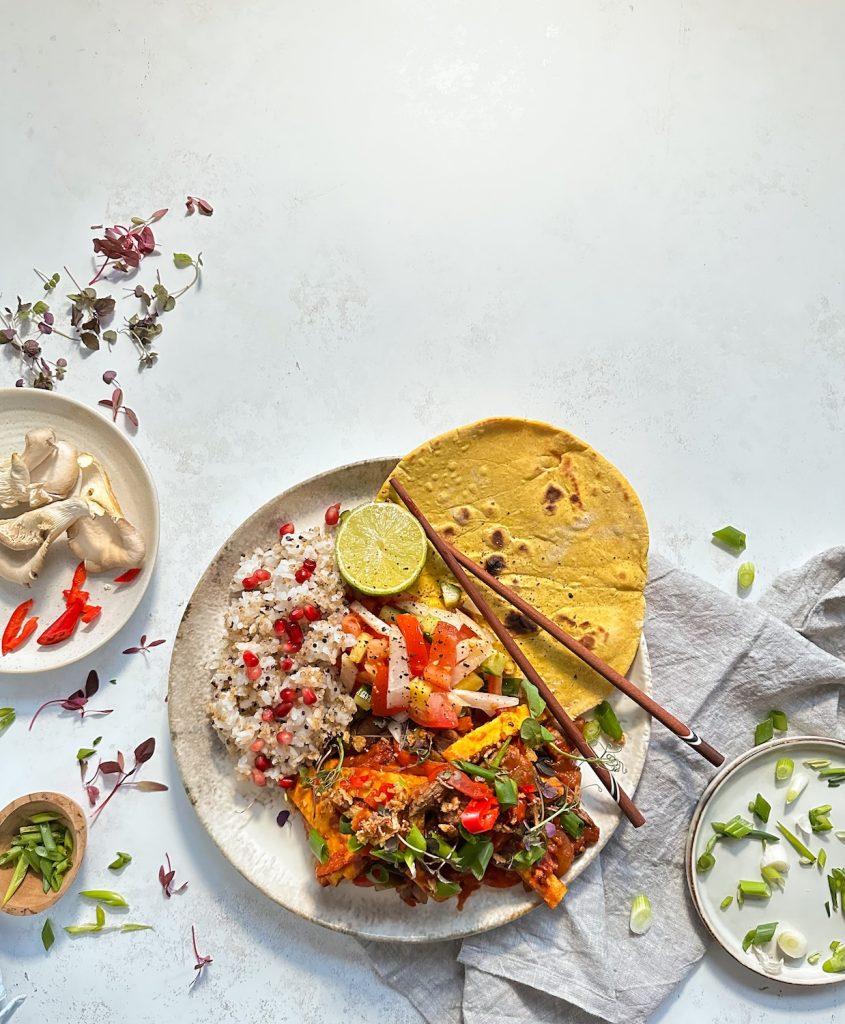
Why Your Food Photos Fall Flat (Food Photography Tips That Work)
You’ve styled a beautiful plate of food, chosen your favourite props, clicked the shutter… and the photo still looks a bit “meh.” You can read endless food photography tips, but the real game-changer is understanding the difference between food styling and food photography composition.
The truth is, great food photography isn’t just about the styling (what you use). It’s equally about the composition (where you put things in the frame). Mixing the two up is one of the most common beginner food photography mistakes. Once you understand the difference, you’ll start seeing instant improvements in your shots.
Food photography composition – Where you put things:
Food photography composition is all about how you arrange the food and props in your photo. Get it right, and you’ll lead the viewer’s eye exactly where you want it to go.
Simple composition tips for food photography:
Use diagonals: Place plates or cutlery on a diagonal line to create energy and flow.
Think in threes: Odd numbers (3 plates, 5 biscuits) look more natural than even numbers.
Leave breathing space: Negative space (empty areas) stops your shot from feeling cluttered and draws attention to the main dish.
Quick test: Squint at your image. Does your eye land on the food first? If not, tweak your composition.

Food composition in action
In this image the three plates are placed on a diagonal line. The shot is symmetrical which adds a more formal and stylised feel. This is Japanese food so that feels appropriate.
The repeated use of circles - the plates, the lime and the flatbread create harmony.
There is a large empty area - negative space - that draws attention to the food and creates a minimalist look - again well suited to Japanese food. The micro herbs and other ingredients are carefully scattered so that they feel controlled but still add a little texture and interest, as well as suggesting flavour.
However, composition, putting the different elements in the right place so that the shot feels balanced and harmonious, is only half the story. The composition could be perfect and yet the image won't work if you have used the wrong sort of props.
Styling: what you use
This starts with asking yourself what are you trying to say? What's the story? It's important to decide the story or mood at the outset, before you do anything else. This way, you’ll have a clear idea of the type of props, colours and textures that will work. With these decisions made you will have a strong sense of how the final image should look and you’re less likely to go off track.
So, food styling for photography is about selecting appropriate props that set the right mood and tell the story. But there’s much more to it than that. The props are also there to add interest and to stop the shot feeling flat and boring. And the food should be styled so that it looks as appetising as possible and so that it appeals to the senses. The styling should suggest how it will smell, taste, feel and even sound like to eat.
Food styling tips that work:
- Match your story: I've already used the words 'Japanese', 'minimalist', 'controlled' and 'stylised' when talking about the composition of the image in this post. That is reinforced by the styling: the choice of props - neutral coloured plates, napkin and backdrop with subtle textures that allow the vibrant colours of the food to contrast and stand out. There's a slightly rustic feel to the plates, backdrop and wooden bowl and chopsticks.
- Keep it real: the scattering of ingredients stops the shot from feeling too artificial, even though we know it's staged.
- Appeal to the senses: suggest taste, smell and texture with fresh ingredients.
Final thoughts
Great food photography tips aren’t about expensive props or complicated set-ups. They are about having a clear story and mood from the outset and getting the balance right between food styling and food composition.
Once you start separating the two in your mind, your photos will feel clearer, more intentional, and far more engaging.
Want more beginner food photography tips? Download my free food photography guides at the end of this post, and start creating images that really stand out.



No comments yet.